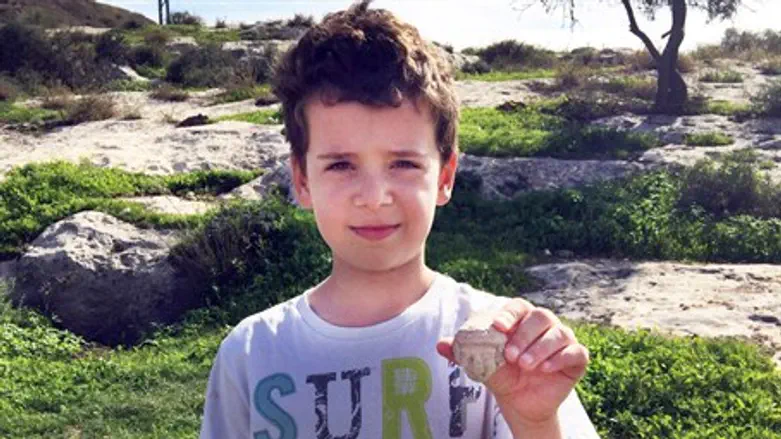
A school-age boy discovered more than just history last week, after he stumbled upon the head of a statue from the First Temple era.
The Halperin family traveled to Tel Beit Shemesh last weekend from Pardesiah when their youngest son, 8 year-old Itai, found a round object on the ground. When examining the object, made of clay, he was surprised to see that it was the top of a statue.
The family rushed to report the find to the Israel Antiquities Authority (IAA). Meeting with Alexander Glick, an archaeologist from the Emek Hefer and Hasharon districts, they were shocked to find that the artifact was of great historical significance. The discovery proved a dream come true for Itai, who revealed he had recently watched an "Indiana Jones" movie and wanted to grow up to become a great archaeologist.
Alexander praised Itai for going to the IAA with the find, like a good Israeli citizen, and explained to him that these finds help archaeologists in the field.
The Israel Antiquities Authority will grant a certificate of appreciation to Itai and his classmates will be invited to an archaeological dig along with the IAA, and tour the state treasury.
Alon de Groot, an expert in Iron Age from the IAA, identified the finding as head of the statue of the goddess of fertility.
"Such figurines, in the form of a nude woman symbolizing fertility, were common in the homes of residents of the Kingdom of Judah from the 8th century BCE to the destruction of the kingdom by the Babylonians in the days of Zedekiah (586 BCE)."
According to Anna Aiiric, an IAA expert on Judea, the finding was "not by chance." Tel Beit Shemesh is "near a residential district from the First Temple," she said.
"Beit Shemesh mentioned in the Bible as a city the land of Judeah," she noted. "Over the summer, excavations were conducted there via Tel Aviv University, headed by Dr. Zvi Lederman and Prof. Shlomo Bunimovich. These excavations indicate that during the First Temple, a large city was there, which was the center of industrial and commercial zones."
''The city was surrounded by a wall that surrounded many residential buildings, and the team also found public buildings, warehouses and a spectacular water plant."
"In 701 BC, the Assyrian king Sennacherib destroyed Beit Shemesh, and the final destruction of the premises was made in 586 BC by Nebuchadnezzar, king of Babylon."
